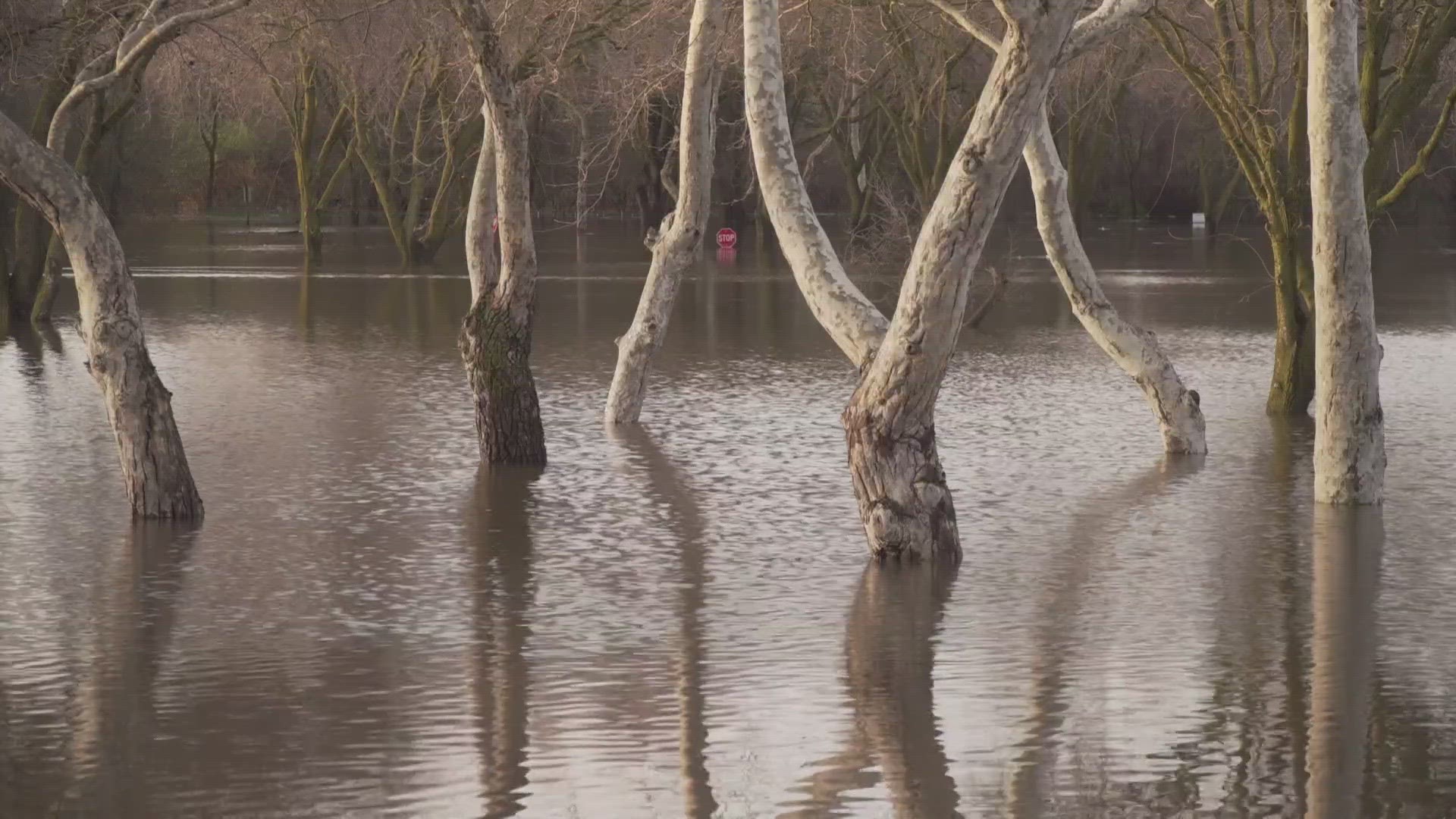CALIFORNIA, USA — California's Office of Emergency Services is hard at work, around the clock, coordinating with law enforcement and other first responders across the state.
A Cal OES spokesperson said it’s like a constant chess match, trying to figure out the best place to move and station crews.
The continuous rain and snowmelt is having a major impact on communities up and down the state.
“We have 40 of our 58 counties that are under a state of emergency right now," Cal OES Multimedia Manager Bryan May said. "So it's really all hands on deck across the entire state.”
Across California, there are 16 different rivers above flood stage.
“We have 27,000 people that are under evacuation orders right now," May said. "That number is changing all the time and very well could go up throughout the day.”
Swollen creeks and rivers are bringing levees to their breaking point.
“We've seen some of the levees that have broken across the state, and Monterey County is certainly the biggest example of that right now," May said. "We're seeing rains at a level... we haven't seen in 30, 40, 50 years.”
Cal OES is at the center of it all at the state operations center, coordinating the National Guard, CHP, Caltrans, Cal Fire and other state agencies.
“We're looking at about 28 total incidents that Cal Fire resources are committed to right now with about 41 active missions that we're supporting,” said Cal Fire's Isaac Sanchez.
Each agency is ready to respond at a moments notice.
“With a wildfire, we try and stop the wildfire as soon as we can," May said. "With this, we know we can't stop this storm, it is coming in with its full force. We're trying to anticipate where the greatest needs going to be. We are pre-positioning resources in those areas, whether it's a high water vehicle with the California National Guard, some of their heavy helos that we can use for rescue efforts.”
This is the 11th atmospheric river the state has been hit with in the last few months.
There’s a bill that just passed through a committee Tuesday that would put state funding towards studying atmospheric rivers to optimize water management, increase storage and reduce flood risk.
WATCH ALSO:



















